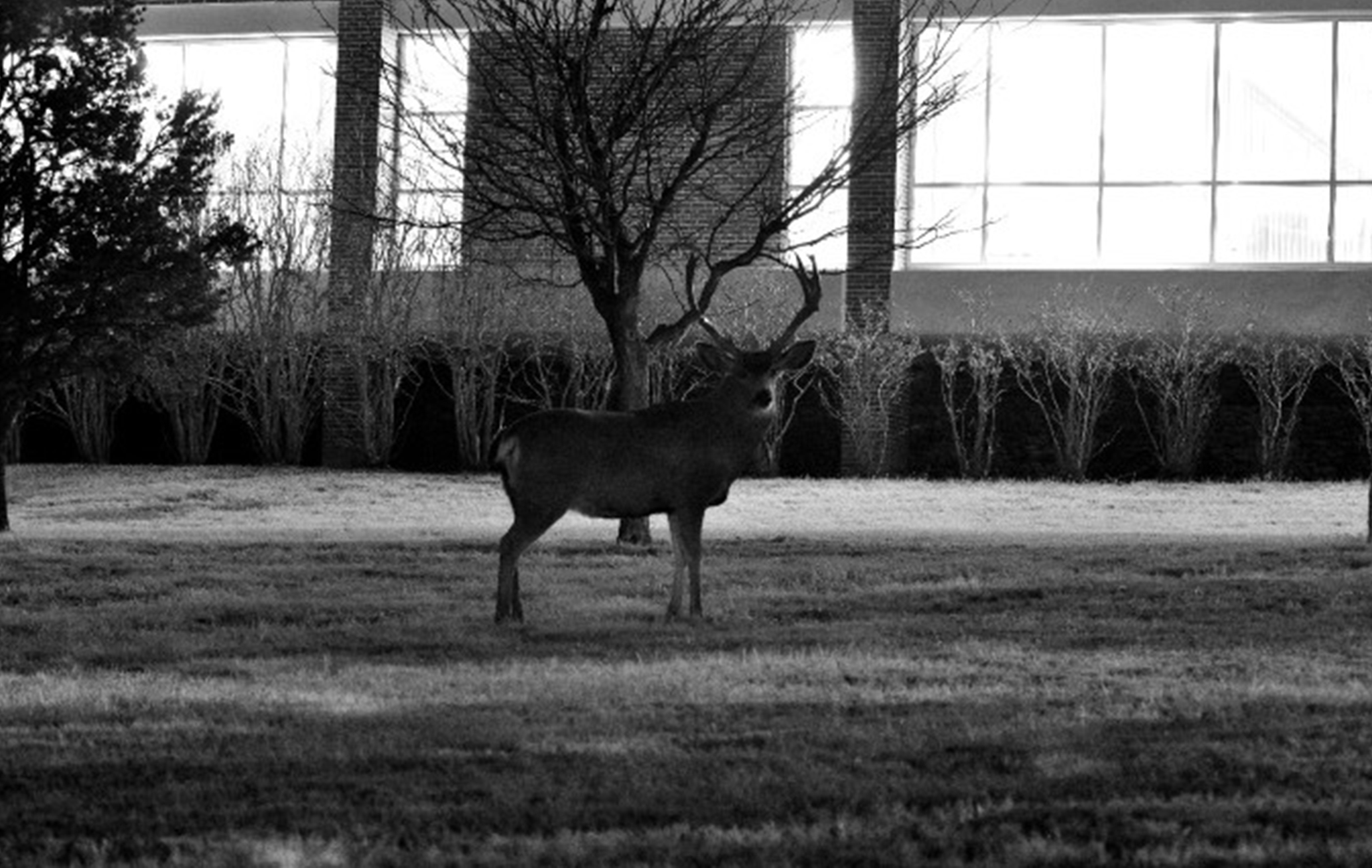
• by Brandt Buchanan •
Soon after the first frost in fall, students at Sul Ross in Alpine may notice big desert mule deer bucks (Odocoileus hemionus crooki) emerge and begin roaming the campus. On any given fall or winter afternoon, these bucks can trickle off Hancock Hill to enjoy a buffet of Alpine’s still-tender lawns and gardens.
Having immediate access to nature and the chance to view plentiful wildlife like mule deer are just two of the shining features that make the Sul Ross experience so unique.
“It’s also what makes being a student at Sul Ross fun and exciting,” says Chelby Hinds, a graduate student in the wildlife management program.
Hinds, like other Sul Ross students, is afforded a special opportunity to serve on the forefront of wildlife conservation in one of the most unique ecoregions in the state of Texas. It’s an opportunity she has come to appreciate.
“It’s so much fun being able to go out into the field and get hands–on experience with certain wildlife species in my different classes,” she said, adding that those one–on–one experiences with wildlife influenced her decision to pursue a career as a wildlife biologist.
Hinds is studying the seasonal movements of urban mule deer in Alpine with the goal of gathering data to help wildlife management agencies better manage urban mule deer populations. Her research is being done in conjunction with the Borderlands Research Institute, another unique Sul Ross feature.
Located in the Turner Range & Animal Science Building, BRI was established in 2007 to provide both graduate and undergraduate students a venue to pursue their passions in wildlife and natural resource management studies. Though it’s not a hard sell, BRI isn’t shy about bragging on the Big Bend’s natural advantages for students like Hinds.
“The Chihuahuan Desert Borderlands offer some of the most scenic outdoor classrooms available worldwide,” states the BRI website.
The Institute believes lessons learned on the side of a mountain are lessons not easily forgotten, and that students can play an important role in achieving the goal of “providing land managers with the most current scientific information.” Students also receive marketable experience in the process, ultimately giving them more bang for their tuition buck.
While Lobos not studying wildlife or natural resource management don’t generally take a lot of classes at RAS, that won’t prevent them from experiencing the natural wonders of the Big Bend. For starters, several student organizations offer different ways to explore the region’s landscape and the diversity of critters that call it home. General science courses are another good place to start for those who are more than “kinda-interested” in learning about the intricacies of nature.
Not everyone at SRSU considers herself or himself a “nature-person,” but its difficult to go a week, let alone an entire semester, without witnessing and appreciating the grandeur of a Far West Texas sunrise or sunset. And I’d bet nearly every Sul Ross student has ventured up Hancock Hill on at least one occasion—for whatever reason—and enjoyed it.
For me, the campus setting and surroundings are comfortable largely due to the fact that I’ve spent most of my time thus far outdoors and on rangeland. Being able to wander the University’s pastures and trails and see wildlife everyday makes for a lovely transition into “town-living”—as my pursuit of higher education eventually takes me to an urban environment. Even with the occasional car sounds and train whistles, the town of Alpine makes for a genuine juncture of “wildland” and town—able to entrance just about anyone, student or not, who stays too long.